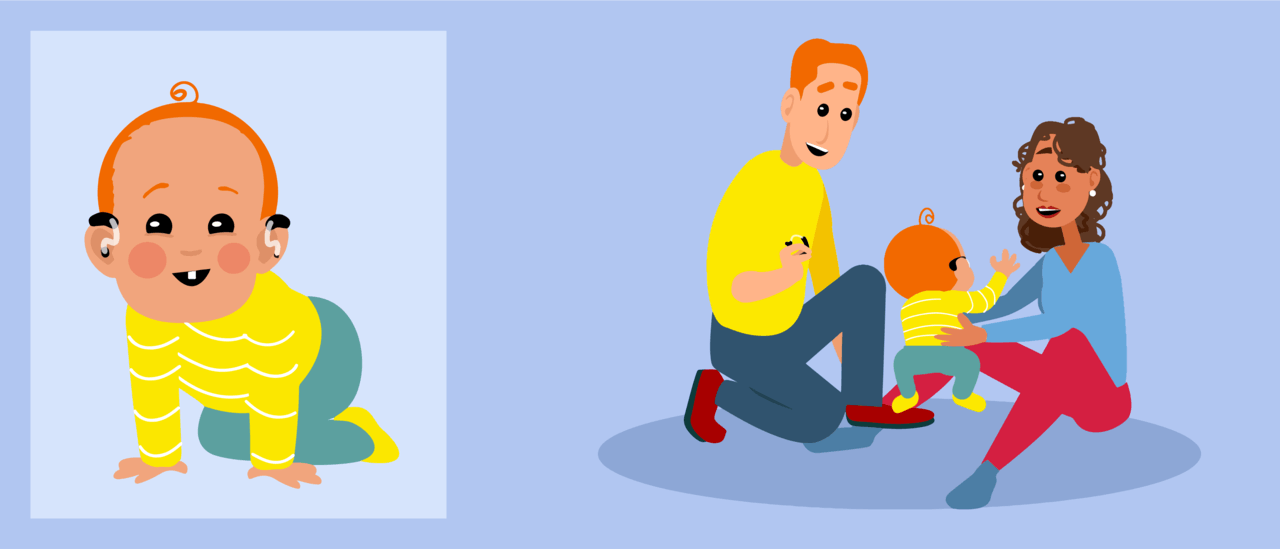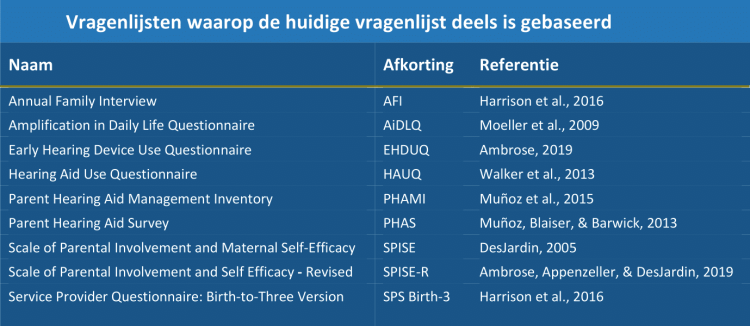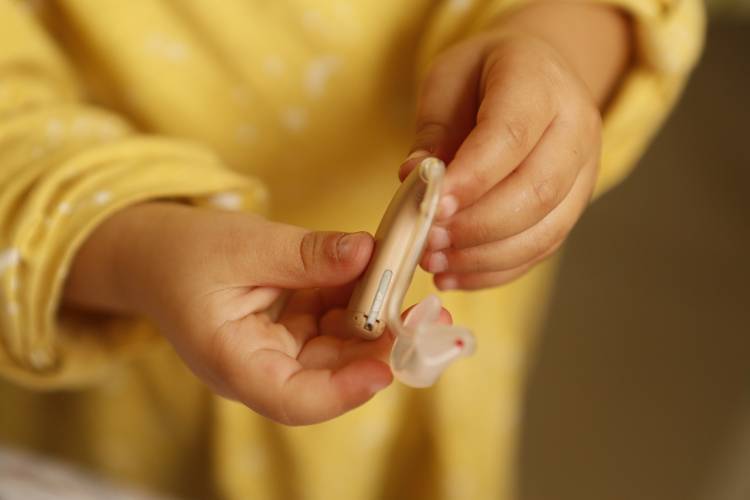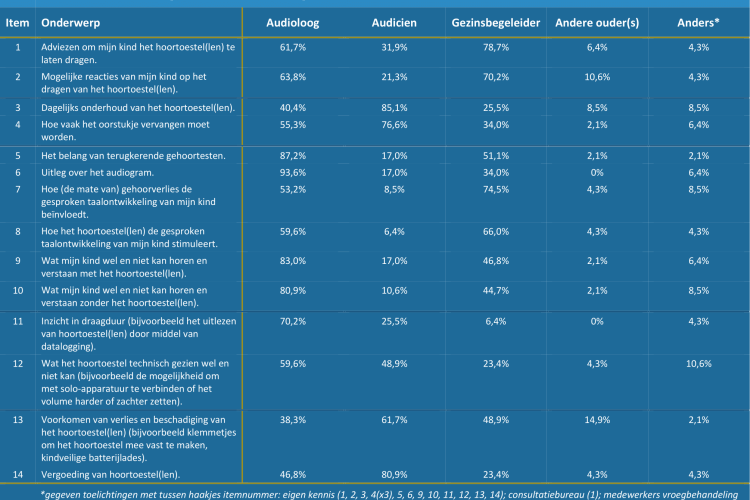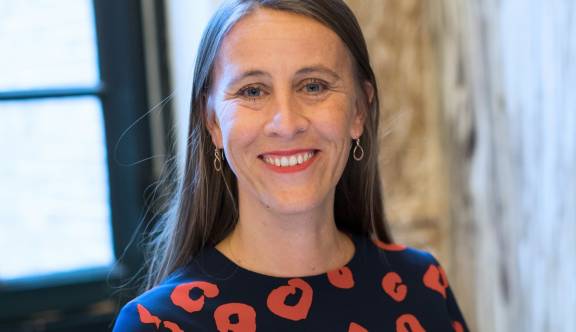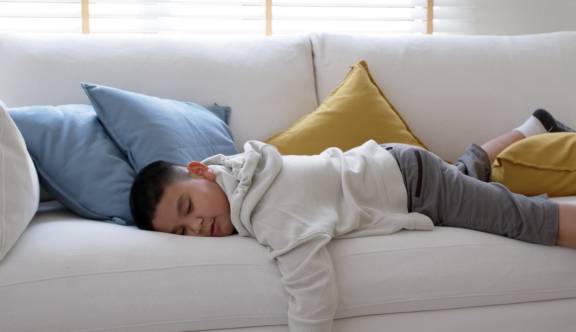Literatuuroverzicht
[1] Van der Zee, R. B., Uilenburg, N. N., van der Ploeg, C. K. P., & Dirks, E. (2022). Prevalence of hearing loss in Dutch newborns: Results of the nationwide well-baby newborn hearing screening program. Applied Sciences, 12(4), 2035. https://doi.org/10.3390/app12042035
[2] Tomblin, J. B., Harrison, M., Ambrose, S. E., Walker, E. A., Oleson, J. J., & Moeller, M. P. (2015). Language outcomes in young children with mild to severe hearing loss. Ear and Hearing, 36(suppl 1), 76S–91S. https://doi.org/10.1097/AUD.0000000000000219
[3] Ambrose, S. E., Appenzeller, M., & Al-Salim, S. (2019). Supporting the hearing device use of infants and toddlers enrolled in early intervention. In: H. W. Francis (Mod.), AG Bell 2019 Research forum the impact of hearing loss on childhood development and family constellation (pp 15–21).
[4] Muñoz, K., Olson, W. A., Twohig, M. P., Preston, E., Blaiser, K., & White, K. R. (2015). Pediatric hearing aid use: Parent-reported challenges. Ear and Hearing, 36(2), 279–287. https://doi.org/10.1097/AUD.0000000000000111
[5] Bandura, A. (1989). Regulation of cognitive processes through perceived self-efficacy. Developmental Psychology, 25, 729–735. https://doi.org/10.1037/0012-1649.25.5.729
[6] Moeller, M. P., Carr, G., Seaver, L., Stredler-Brown, A., & Holzinger, D. (2013). Best practices in family-centered early intervention for children who are deaf or hard of hearing: An international consensus statement. Journal of Deaf Studies and Deaf Education, 18(4), 429-445. https://doi.org/10.1093/deafed/ent034
[7] Desjardin, J. L. (2005). Maternal perceptions of self-efficacy and involvement in the auditory development of young children with prelingual deafness. Journal of Early Intervention, 27(3), 193–209. https://doi.org/10.1177/1053815105027003

